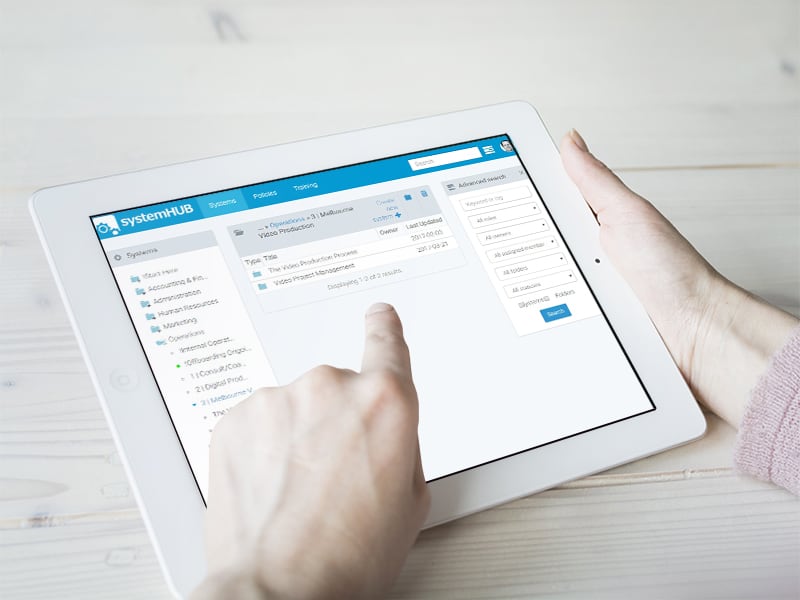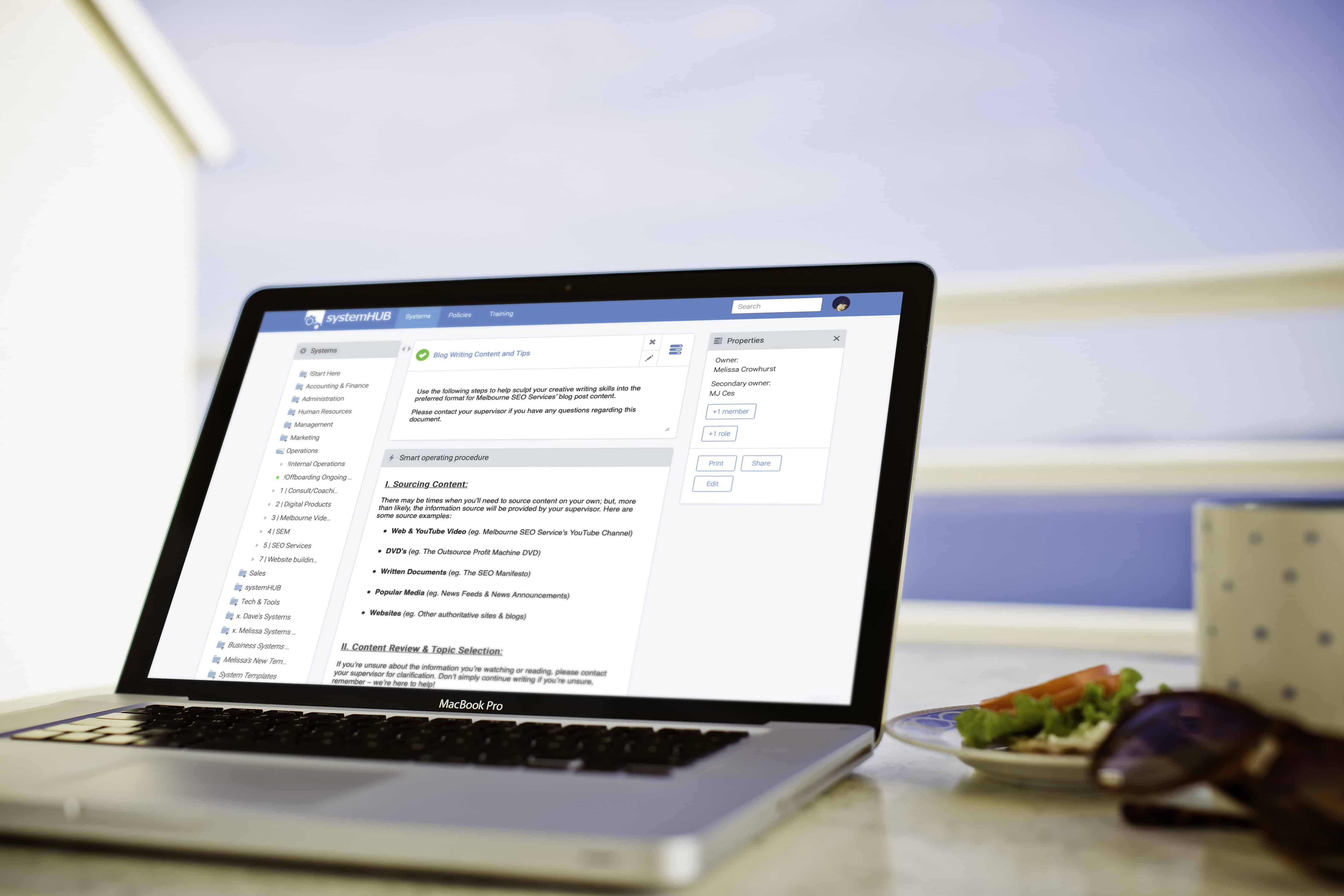Standard Operating Procedures: The Benefits to Your Business
All businesses are different in what they do and how they operate. However, they all aim for the same result. That result, of course, is to deliver a fantastic service and a worthwhile product to the end user. Along the way, that means such a product and/or service needs to be handled with care – to be designed with the end user in mind, and to make sure any and all team members are fully aware of their responsibilities in the business’ chain.
However, guaranteeing you get the desired outcome from a business procedure each and every time can be difficult. That is, unless you have some form of a system or formal process in place. It may seem trendy to go with the flow, but ultimately, without a solid operating procedure or two in place, you will be running the risk of delivering poor results, running over-budget and losing patience.
Without some form of strategy, all three could be bogging your business down without you ever realising it.
So, where do you begin? The best thing to do is to start looking at free standard operating procedures. Think about downloading checklist templates and build a process or two, which are all your own. Sometimes, however, just putting pen to paper isn’t so simple. Let’s take a look through some SOP basics, and consider why free SOP models are so important for businesses and brands in the modern age.

Processes and procedures help ensure your team members know exactly what is expected of them and how to fulfill those expectations.
What is a Standard Operating Procedure?
Simply put, a Standard Operating Procedure (SOP) is a basic written guideline.
- An SOP clearly defines the route from the start of a process through to the delivery of a product.
- SOPs will define which processes need to take place along the way.
- That means team members will be able to identify where they fit into the chain. They will be able to look up and understand their responsibilities in the overall procedure from day to day.
- SOPs can help to define standard guidelines for health and safety, good technical practice, financial controls, security regulations and more besides.
- Ultimately, SOPs exist to show team members what they need to do to work together and to obtain a particular result.
SOPs are designed to ensure that the same end goal occurs every time. They are clear, concise ways to make sure all bases are covered and protocols followed. In a world where so much information is at our fingertips, it can be easy to get confused. Therefore, a good SOP will be able to show all brand members what is expected of them from chain to chain.
The Benefits SOPs.
Sure we love SOPs but why? What are the real world benefits of developing you SOP library.
- SOPs help to protect against errors: Errors and miscommunications can lead to a slowdown in processing or even a result which isn’t desired.
- SOPs, naturally, help to ensure that customers and clients get the outcome they deserve. A good SOP will join marketing, processing and delivery together, which means all channels are working together as one.
- SOPs help all members of a team understand their roles and how they connect to each other. There is little room for doubt when everything is written as part of a formal procedure.
- It can also be said that a good SOP will help to empower team members. They help staff to understand their value within a company chain, and show them that they are valued by management.
But, is it necessarily so easy to build a process? Why document processes at all?

The SOP Writing Process
Writing an SOP isn’t always as simple as it may seem. Whether you use a free template or build your own from scratch, you are going to need to make sure that your SOP:
- Is written-out and documented on paper
- Is logically arranged and easy to follow
- Can be used on a day-to-day basis
- Is entirely authorised by management
- Is checked and analysed regularly
You will also need to make sure that your SOP contains the following:
- Document Control Information: This means you must clearly imprint your branding, your logo, any signatories, any template data, dates for review, dates for implementation, clear titling and numbers for pages and versions.
- SOP Data: this is the meat of the matter. You must include clear SOP purposes, who is responsible at each step, who is responsible for the whole procedure, any process links, standards, definitions and clear steps along the process.
Ultimately, SOPs should be easy for all personnel to read, understand and follow. Therefore, you are going to need to think carefully about how to put such data across. That is where free SOP templates and resources come in.
SOP & System Samples
Ultimately, SOPs should be easy for all personnel to read, understand and follow. Therefore, you are going to need to think carefully about how to put such data across. That is where free SOP templates and resources come in.
General Purpose SOPs
Free SOP templates which have general tables and guide notes are the perfect choices for anyone who is comfortable with working with a blank canvas of sorts. While general templates will give you a lot of freedom as far as content is concerned, they will also help you with instructive notes on how to approach each point. These templates will help you understand how the basics of a system or SOP works.
Checklists
A checklist is a type of SOP that is perhaps one of the most simple. While more advanced systems will look at intricate cause and effect, a checklist will help you to make sure certain jobs are completed within specific time frames. These system templates are perhaps most beneficial to one-off projects and project managers who operate their own workflows. Finding a to-do list template is a good start, but you will likely need to think a little more outside of the box.
Step-By-Step Guides
These can include more advanced workflows and checklists. These SOPs are perhaps more popular with small businesses as they can clearly outline and define personal responsibilities. They can also help to ensure that the same procedures are followed over and over again without fail. For some companies, something a little more advanced may be advisable.

SOPs help team members do well on their tasks, which will then inspire them to work more efficiently and lead to greater productivity.
OP Manuals
It may be a little further down the road that you consider creating your own manual, but they can be very useful in keeping data together. Intranet manuals and knowledge bases can help employees navigate problems daily. Building a digital or physical manual is entirely possible with the help of free SOP templates. However, this may be a long-term project you need to take time with.
You may also find that there are plenty of specific systems and SOPs which could help with any of the following:
- Client retention strategies
- Employee engagement and morale
- Regular meeting and conference strategies
- Data acquisition strategy
- Management process suggestions
- Budgetary management
- Conflict resolution
- Employee hiring and headhunting
- External discourse with customers and clients
These are only a few ideas. While you may be tempted to find a very specific system or SOP to base your schedules on, it is healthier to consider looking at a blank canvas and working with your team to define what happens, when, why and how.
Things to Remember
Before you download any to-do list templates or free systems, here are a few closing points we think you should consider:
- Think about your SOP’s audience very carefully. Ask them for advice and input.
- Think carefully about who your SOP is likely to affect. How far does it reach?
- Clearly define your start and end points, and then focus on fleshing out the middle.
- You should always keep your end goal in mind. This is the reason for an SOP existing in the first place.
- Always ensure that any guidelines or procedures set to be enshrined in company code are signed off by senior management.
- Consider your audience’s tone. Don’t overload them with jargon or exclusive vocabulary.
- Always be ready to revise an SOP. You can’t always get a procedure right the first time. Reviewing and analysing your data will help to keep it relevant for time to come.
Getting Started with Systems & SOPs
Getting your business acquainted with the idea of systems is exciting. Here at systemHUB®, we know only too well the difference that a well-crafted series of systems can bring to any firm.
If you are interested in designing your own SOPs and want to download some great ideas, systemHUB® is here to help. Call or email us to get started.